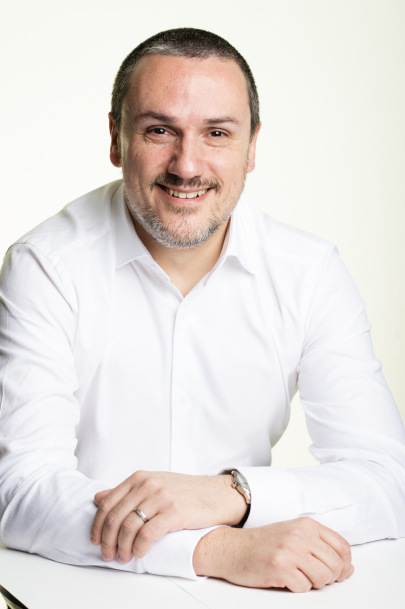Frédéric MichonInstitut des neurosciences (Montpellier) - Inserm / Université de Montpellier
Mes recherches
Mes recherches combinent les échelles moléculaire, cellulaire et tissulaire afin de comprendre l’impact du microenvironnement sur la physiologie cornéenne. Après une thèse (2003-2007) effectuée à Grenoble, sur les organes ectodermiques de la peau, j’ai rejoint le laboratoire du Prof. Irma Thesleff à Helsinki, Finlande, pour un post-doc sur un autre organe ectodermique, la dent. En 2013, j’ai monté mon équipe de recherche à l’Université d’Helsinki, où notre intérêt se portait sur la régulation des cellules souches dans différents modèles. En 2018, j’ai été recruté à l’Inserm en tant que CRCN, et j’ai obtenu le financement ATIP-Avenir. En 2019, ce financement m’a permis de monter l’équipe « Cornée » au sein de l’Institut des Neurosciences de Montpellier. Le travail de mon équipe est de comprendre l’impact du microenvironnement cornéen dans les physiopathologies cornéennes. Notre but est de pouvoir proposer à long terme de nouvelles approches thérapeutiques maintenant l’intégrité de la cornée, et donc assurer aux patients une vue saine.
Mon projet ATIP-Avenir
Deciphering the nature and origin of the molecular signals facilitating cornea renewal and regeneration
DESIFACOR
Corneal homeostasis is instrumental to maintain a clear vision. Injuries or diseases can lead to a loss of cornea transparency, and ultimately loss of vision. Around 28 million people suffer from uni- or bi-lateral corneal blindness worldwide. Land and aquatic vertebrates had to adapt to their environment, and develop strategies to maintain healthy the corneal epithelium, which is overly exposed to environmental aggression. Therefore, it raises the question of an ancestral genetic network that was conserved for corneal homeostasis and regeneration. This project aims at addressing the question of the origin of the factors necessary to maintain a healthy cornea, and therefore, a clear vision. We are combining the molecular, cellular and tissular levels on three evolutionary distant models to decipher the specific events participating in maintaining corneal epithelium in physiological and pathological contexts. This work should provide new insights on the factors required for the corneal homeostasis, and open new avenues for treating corneal defects
